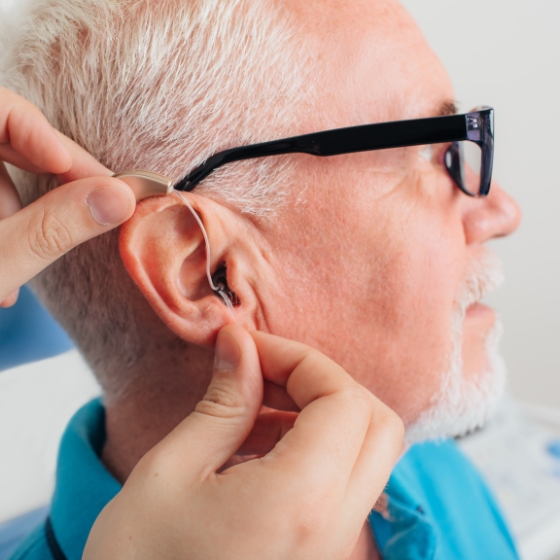Hearing loss is one of the most common health conditions affecting people all around the world. It can affect individuals of any age, gender, or race, and can have a profound impact on their quality of life.
One type of hearing loss becoming increasingly prevalent is progressive hearing loss.
What is Progressive Hearing Loss?
Progressive hearing loss refers to a gradual and continuous decline in a person’s ability to hear. Unlike sudden hearing loss, which occurs suddenly and often without warning, progressive hearing loss develops slowly over time.
This means the individual may not even realise that their hearing is declining until it has reached a significant level.
Causes of Progressive Hearing Loss
The most common cause of progressive hearing loss is age-related changes in the inner ear, also known as presbycusis.
As we age, the delicate hair cells in our inner ear responsible for transmitting sound signals to the brain become damaged and can no longer function properly. This results in a gradual decline in hearing ability.
In addition to age-related changes, other factors can contribute to progressive hearing loss, including exposure to loud noise, genetics, certain medications, and underlying health conditions.
Symptoms of Progressive Hearing Loss
The symptoms of progressive hearing loss can vary from person to person, but the most common signs include difficulty understanding speech in noisy environments, asking others to repeat themselves frequently, and turning up the volume on electronic devices.
Other symptoms may include ringing or buzzing in the ears (tinnitus) and a feeling of fullness or pressure in the ears.
Treatment Options
Unfortunately, there is no cure for progressive hearing loss. However, there are several treatment options available that can help individuals manage their symptoms and improve their quality of life. These include:
- Hearing aids: These electronic devices amplify sound and make it easier to hear for those with hearing loss.
- Cochlear implants: This surgically implanted device can help individuals with severe hearing loss or deafness by stimulating the auditory nerve.
- Assistive listening devices: These devices can be used in conjunction with hearing aids to improve hearing in specific situations, such as watching TV or talking on the phone.
- Communication strategies: Learning techniques for better communication, such as lip reading and speaking clearly, can also be helpful.
Prevention
While progressive hearing loss cannot always be prevented, there are steps individuals can take to protect their hearing and slow the progression of age-related changes. These include:
- Limiting exposure to loud noise: This includes wearing hearing protection in noisy environments, such as concerts or construction sites.
- Avoiding ototoxic medications: Certain medications can damage the hair cells in the inner ear and contribute to progressive hearing loss.
- Maintaining a healthy lifestyle: Eating a balanced diet, exercising regularly, and avoiding smoking can all
Takeaway
Progressive hearing loss is a common condition that can have a significant impact on an individual’s life. While there is no cure, there are several treatment options available to help manage symptoms and improve quality of life.
By taking steps to protect our hearing and maintaining a healthy lifestyle, we can slow the progression of age-related changes in the inner ear and reduce our risk of developing progressive hearing loss.
If someone you care about is dealing with hearing loss, don’t let them visit the audiologist alone.
Your support can profoundly help them in their journey in navigating this.
Therefore, be there to support them, encouraging them to seek help if they experience any signs of progressive hearing loss. Your presence and guidance can truly have a positive impact on their well-being and their visit to the specialist.
Let’s work together to create a more inclusive world for those with hearing impairments.




